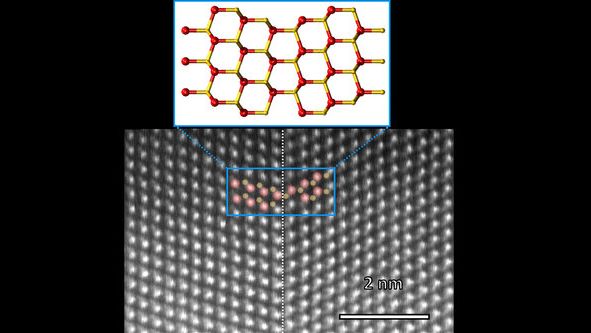/ Forschung / Hightech Zentrum Aargau
Better thermal conductivity due to modified atomic arrangement

Tailoring the thermal conductivity of materials is a current challenge in nanoscience. Researchers from the University of Basel, together with colleagues from the Netherlands and Spain, have shown that atomic vibrations that determine thermal conductivity can be controlled simply by arranging atoms in nanowires. The scientists recently published the results in the journal Nano Letters.
In the electronics and computer industry, components are becoming ever smaller and more powerful. The problem here is heat generation, which is caused by mechanical waves. It is therefore important to study these waves - known as phonons - in detail and to understand their behavior in the material. Today, research is even going one step further and is specifically designing materials that can be used to control the propagation of phonons. On the one hand, to produce materials that give off heat very quickly and therefore heat up only slightly. On the other hand, to maintain heat differences for as long as possible and use them to generate electricity.
Improved propagation through rotation
The group of Prof. Dr. Ilaria Zardo from the Department of Physics and the Swiss Nanoscience Institute at the University of Basel is investigating materials that have tailored properties in the emission and propagation of phonons. As part of an international collaboration led by Zardo, the nanoscientists have now been able to show for the first time that the arrangement of the atoms alone has an influence on the phonons and thus on the thermal conductivity.
To this end, the researchers have produced gallium phosphide nanowires in which successive crystal layers are periodically twisted against each other by 60 degrees. This arrangement forms a superstructure in which phonons propagate coherently - in other words, they conduct heat very effectively.
Interfaces without defects
Until now, such superstructures have been made from periodically arranged layers of different materials. However, the interfaces between different materials are often not clearly defined, and defects occur which massively reduce the propagation of the phonons and thus the thermal conductivity.
In the present research, the researchers demonstrated that such interference effects do not occur when the material of the layers is identical but differs in the arrangement of the atoms. And although the layers are made of the same material, simply rotating the layers with respect to each other changes the phononic properties. Until now, whether these novel systems behave like conventional superlattices was still up for debate.
The study was carried out in collaboration between the Department of Physics at the University of Basel and the Swiss Nanoscience Institute (SNI) with Eindhoven University of Technology, the Universitat Autònoma de Barcelona and the Institut de Ciència de Materials de Barcelona.
